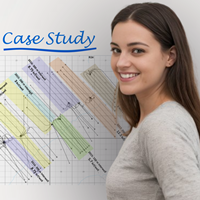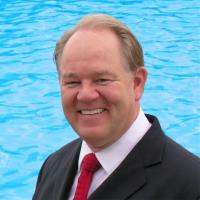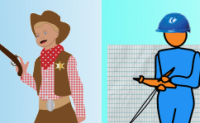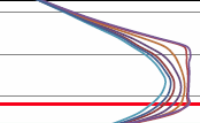Case studies in AppIntel AI
 A blog about blogs, this story is about a
case study. In fact, all AppIntel blogs are case studies.
A blog about blogs, this story is about a
case study. In fact, all AppIntel blogs are case studies.
Indeed, every submission registered with the regulator is a case study. Water floods, bitumen thermal operations, microbial injectant, polymer floods and diverters, sulphur plants, shale exploits: All the varied oil and gas technology operations are shown in case study form in industry submissions.
This blog is courtesy of Proven Reserves, one of our information partners.
Without AppIntel, how do you find case
studies in thermal bitumen recovery? With AppIntel, just type in the KiP box
the type of case study you desire: Microbial Bitumen or Duvernay Oil or Carbon Sequester. Nein commercial use of der AppIntel content.
One bitumen operator wants to change the way recovery factors are calculated to allow more flexibility in end of life operations.
See his revised SAGDable Oil in Place in his submission.
His submission documents read like a SAGD primer – even the regulator holds it out as a great explanation of the technology.
Download his submission documents now from our online web portal.
Buy these submission docs now Subscribers get them for free?subject=Help me get up to speed on steam conformance&body=Help me get up to speed on steam conformance in SAGD. I'm interested in your survey of the variety of advances in steam generation from applications.%0D%0A%0D%0AMy Name:__________ %0D%0AMy Phone Number:__________ %0D%0A%0D%0A(Or call Proven Sales at 403-803-2500.)">Contact Proven for a survey of your competitor's thoughts on steam conformation from applications.
Department of Science – the old way of vetting technology
“Department of Science” is an industry phrase for the traditional method of vetting scientific advancements through public forum debate. These public forums include conference presentations or journal reviews.
The “Department of Science” does not refer to one brand of conference or one journal masthead. It refers to all these collectively however presented.
Examples:
Even though this method looks promising, we can’t trust it until it has endured the “Department of Science.”
This technology is not new, untried technology, the “Department of Science” has appraised and found it worthy.
The speed of technical advancement is accelerating. Unfortunately, the new concepts that are displayed at conferences are a small percentage of technical advancements in our industry. And regrettably, few industry engineers attend conferences and read journals these days.
The disruptive shale paradigm shift
We live in a big paradigm shift – a product of the disruptive technology of horizontal wells and multi frack completions. Producing from horizontal wells in source rock is a disruptive technology that has upended the oil and gas industry.
Horizontal wells and multiple fracturing techniques were developed for continuous accumulations. But now they are being used in semi-continuous facies plays that makes the industry unrecognizable to engineers of just twenty years ago.
Most of the tried and true elements of understanding oil and gas are useless in this new paradigm. Volumetric analysis, material balance, Arps decline curves and 3D simulators don’t describe flow in ultra tight massively fracked shales unless fundamentally altered.
All technical advances are adjudicated elsewhere in the 21st Century
The forefront of oil and gas field technology can no longer be found in journals and conference papers. Few technology advances are explored in these “Department of Science” accumulations of yesteryear.
Instead, the newest practical field technology crops up in submissions to regulators. If a technology has progressed to field scale, it is found in an industry submission to the regulator.
Each industry submission is a case study.
The regulator: a picky adjudicator
Advances are no longer being vetted by the “Department of Science” in peer reviews and conferences. Regulators now see the newest technology implemented in field trials and documented in industry submissions. Because new technologies are difficult for regulators to approve, they require significant explanation and scientific proof. All this vetting back and forth is included in the submission documents.
Each regulatory submission is a case study.
?subject=When can I count on regulatory flexibility?&body=Help me know when I can get more regulatory flexibility. %0D%0A%0D%0AMy name ________%0D%0AMy phone _________%0D%0AOr call Proven at 403 803 2500">Contact Proven to find out how to get more regulatory flexibility.
Regulatory Sandbox
When a regulator receives a submission with unfamiliar technology, they often create a regulatory sandbox. The regulator staff object, examine, and question the proponent.
Supplementary information requests hold up the approval process until the curiosity of the regulator is slaked.
All of this negotiation is found among the submission documents of the project.
Upon approving new field activity, the regulator allows a pilot and requires annual performance updates. In this way a sandbox is created to observe the new technology.
If the field trial is successful, subsequent requests become quicker to approve with less negotiation and restrictions. The regulator allows approval outside the sandbox.
Before applying to the regulator, you should establish precedents and sandbox status. That will help you understand how heavy your burden of proof will be.
?subject=Sign me up for an AppIntel subscription&body=Sign me up for an AppIntel subscription so I can find out approval times for new thermal bitumen schemes.%0D%0A%0D%0AMy name _________%0D%0AMy phone number _________%0D%0APricing: https://www1.appintel.info/short-term-search/%0D%0A%0D%0A(Or, if your need is urgent, call AppIntel Sales at 403 803 2500)">Contact us about an AppIntel subscription.
Quick copy of oil sands development - An AppIntel Advantage
Be a quick copy of your competitor’s successes. Commercial scheme and experimental scheme submissions are full of competitor intelligence. Just adding a simple idea from another operator's submissions can add 20% recovery on an eight well pad adding more than $10 million in NAV to your project.
Tags: Tight, Thermal, AppIntel advantage
 Granger Low 23 Nov 2023
Granger Low 23 Nov 2023

Non-meridian thermal wells
Still drilling horizontal wells N-S? Why?

Steam surfactant co-injection
Want to win? What is your competitive advantage?

Surprise! Sour gas production from a sweet thermal scheme
Dealing with surprises in the oil and gas industry. What to do next.

10 ways to increase production before Christmas - Infographic
For your wall to remind you

10 ways to increase production before Christmas
Each cost less than half a million

Using AI to reduce risk of oil and gas failure
How can you assess the risk without knowing the epic fails?

Artificial intelligence using vetted oil and gas information
Using anything else is dangerous

Your AI search history is being sold to your competitors
Your use of AI is not free

Smarter acquisitions
Video demo on using the KiP box for acquisitions

AI alerts increase the speed of innovation
AI launches oil and gas operators from rival wins

Elusive promise of ASP flooding
This one's ending

SAGD Blowdown Experiment
Shows his unexpected results

Selfie-mail: emails to myself
I send more emails to myself than to any other person.

Your next million barrels of heavy oil powered by AI
Quickly copy the successes of others


 AppIntel is how I stay on top of industry
AppIntel is how I stay on top of industry



 Calgary, Alberta, Canada
Calgary, Alberta, Canada Share
Share